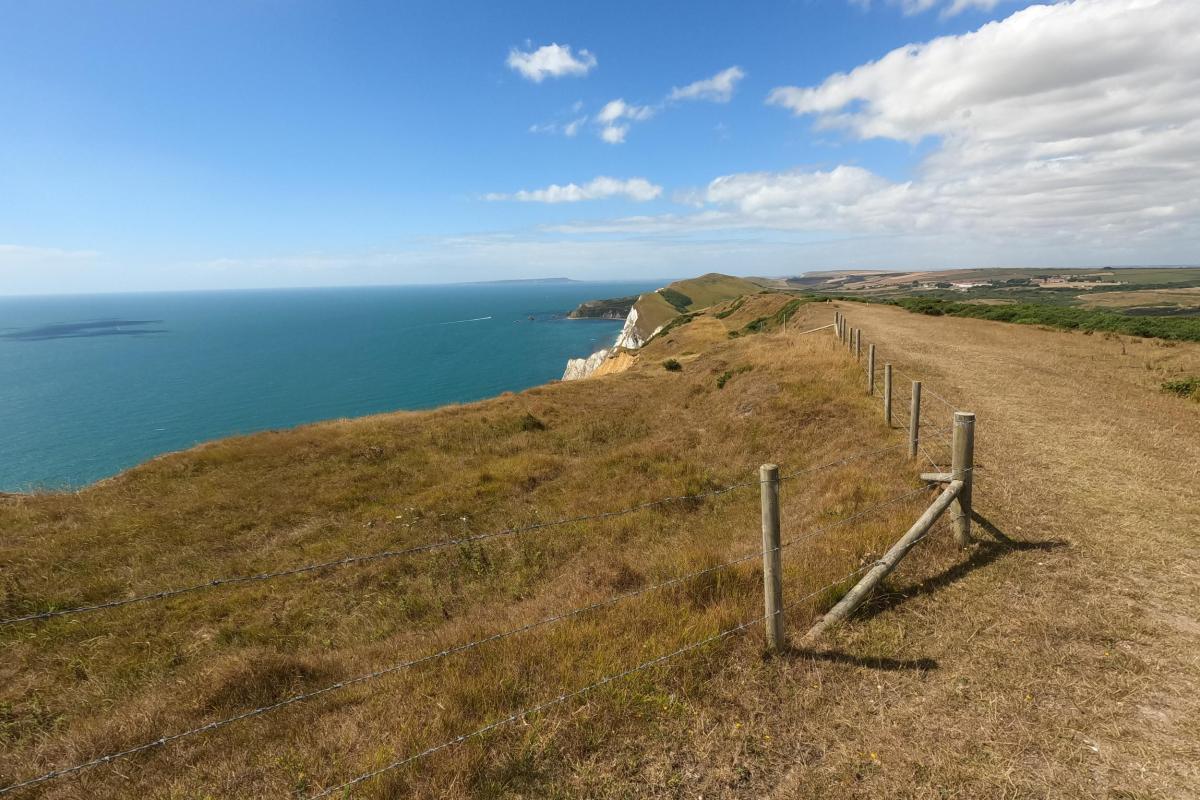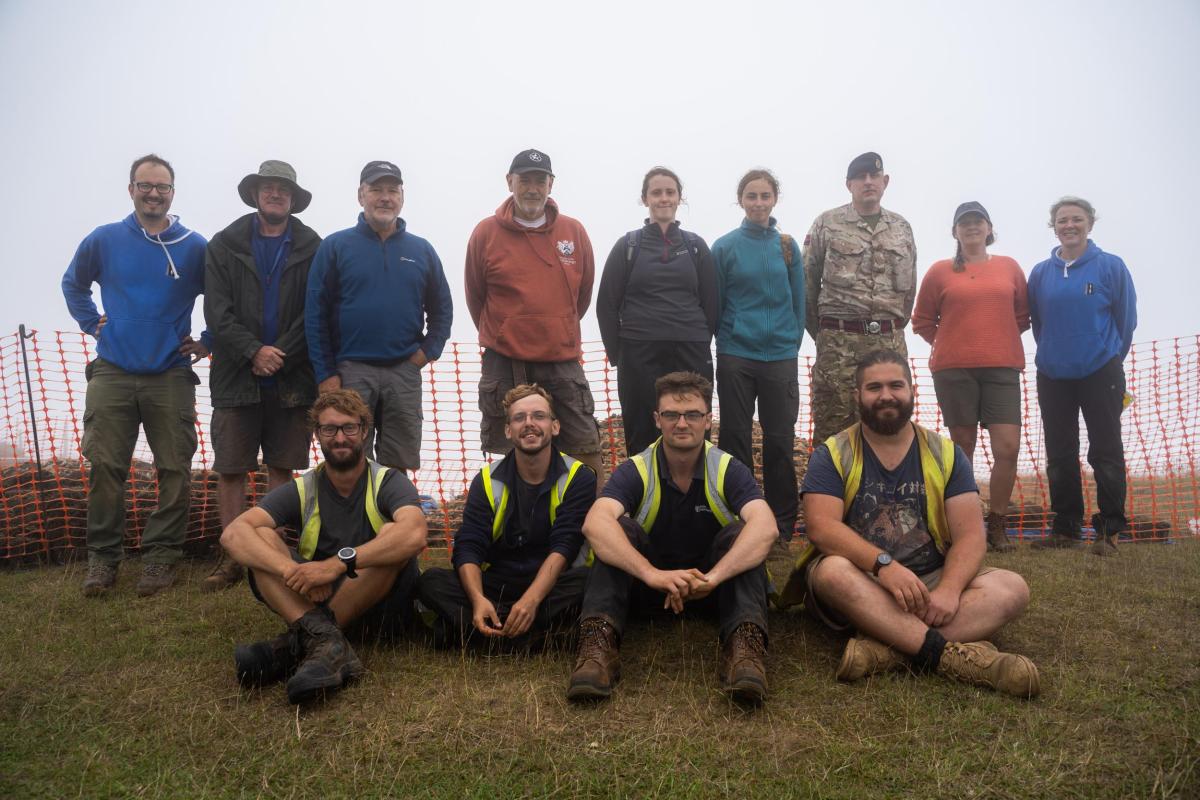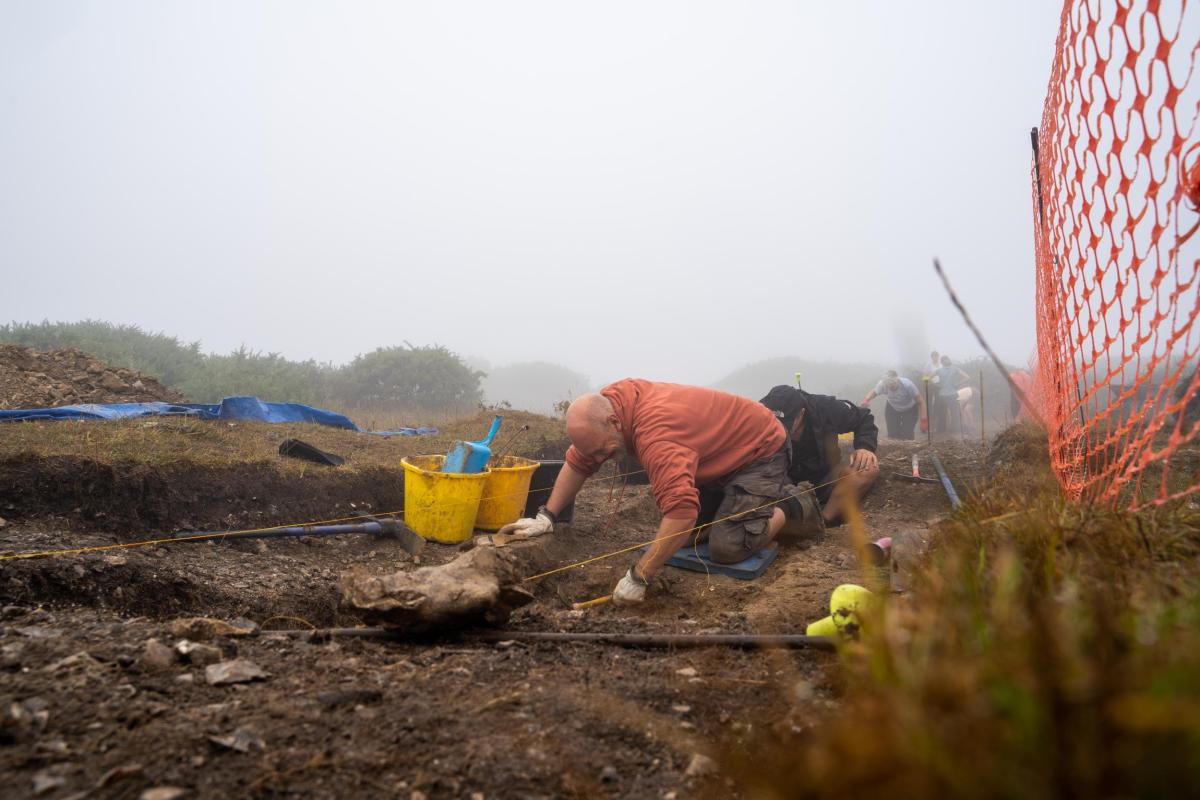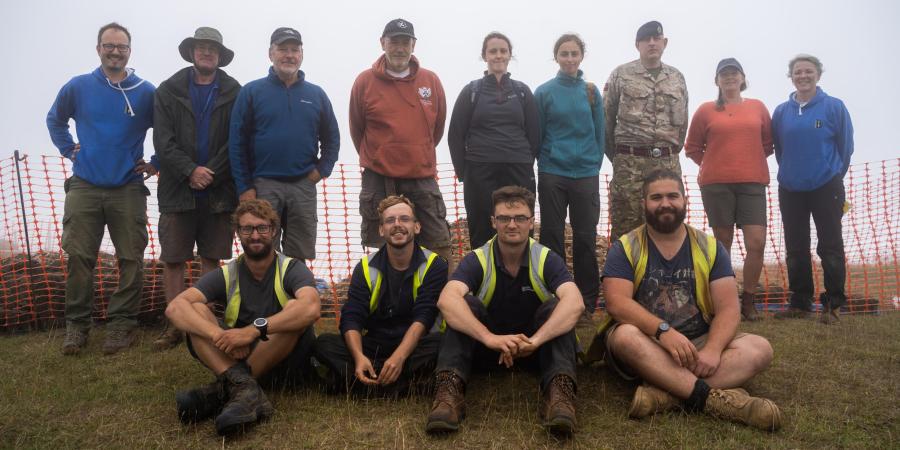Military veterans joined our professional archaeologists to take part in a Defence Infrastructure Organisation (DIO) excavation of the Iron Age hill fort on Lulworth Training Area.
Operation Nightingale is an award-winning scheme where wounded, injured and sick service personnel and veterans take part in archaeological digs on the Defence estate.
Vulnerably perched on the edge of an unstable cliff, the impressive 2,500-year-old Flower’s Barrow hillfort is being lost to the sea due to erosion. As a result, it is on Historic England’s Heritage at Risk Register.
Daniel Bashford, Heritage at Risk Project Officer at Historic England, said:
“Climate change has increased the natural erosion of our coastline which affects the preservation of heritage sites such as Flower’s Barrow. We are pleased to be working with the MOD and Wessex Archaeology on this Operation Nightingale project – it’s a once-in-a-lifetime opportunity to increase our understanding of this vulnerable hillfort before it is lost to the sea.”

Above: View of the Jurassic coastline from the Iron Age Hill Fort
Learning more about Flower’s Barrow
The two-week excavation in August 2022 is gathering as much information as possible about the site and those who lived there before it is lost. This will be added to other information, including detailed surveys being undertaken by Historic England, which will increase our understanding of the site and the surrounding historic landscape. Preserving as much as possible by record will create a valuable resource for current and future generations to study and understand. If Historic England is satisfied that there is no more information which practically be learned, the site can be removed from the Heritage at Risk Register.
Guy Salkeld, the DIO archaeologist who is organising and leading the excavation, said:
“Looking after our land and heritage is really important to the MOD and archaeology on military land is often better preserved than it would otherwise be, as it’s protected from development and industrial agriculture.
“Unfortunately, even the MOD is powerless against the might of the sea. That’s why it’s really important that we gather as much information as possible about Flowers Barrow while we still can. My hope is that this excavation fills in the gaps in our knowledge of the site and ultimately, that we learn enough for it to come off the Heritage at Risk Register.”

Above: Operation Nightingale Flower's Barrow excavation team
Previous finds at Flower’s Barrow include what is thought to be slingshot and it is hoped that this year’s excavation will uncover the location of several houses and possibly domestic finds such as pottery. The team will also clear scrub from the site which will allow Historic England to carry out a drone survey. This will be used to create a detailed model of the site to demonstrate changes over time.
Craig Appleby, former Royal Engineer and member of the Operation Nightingale programme said:
“Being part of the Operation Nightingale team offers huge benefits, both for physical and mental well-being. Working on archaeological digs enables you to slow down and focus on something positive. In addition, taking part in these excavations with like-minded people provided a real sense of purpose and camaraderie.”

Above: Excavations underway at Flower's Barrow
